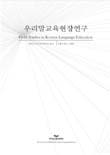학술논문
「토끼전」의 동화화 과정
이용수 882
- 영문명
- Transformations of 「Tokki-jeon」 into Fairy Tales
- 발행기관
- 우리말교육현장학회
- 저자명
- 권순긍(Kwon, Sun-keung) 엄은진
- 간행물 정보
- 『우리말교육현장연구』제6권 제1호, 33~57쪽, 전체 25쪽
- 주제분류
- 사회과학 > 교육학
- 파일형태
- 발행일자
- 2012.05.31
5,800원
구매일시로부터 72시간 이내에 다운로드 가능합니다.
이 학술논문 정보는 (주)교보문고와 각 발행기관 사이에 저작물 이용 계약이 체결된 것으로, 교보문고를 통해 제공되고 있습니다.

국문 초록
오늘날 많은 고전소설은 소설이 아닌 전래동화로 읽히고 있다. 그 대표적인 작품이 「콩쥐팥쥐전」, 「흥부전」, 「토끼전」이다. 이 작품들은 우리의 대표적 고전소설인데 동화로 변모되면서 그 사회성이나 역사성이 제거되고 권선징악의 단순한 이야기로 정착되어 오늘에 이르고 있다. 그 변모의 시점이 1923~24년 ‘전래동화’가 처음 등장했던 무렵이다.
아동문학을 개척했던 소파 방정환은 1923년 2월부터 전래동화를 현상 모집하여 『개벽』지에 싣기 시작했는데, 그 지침이 되는 「새로 개척되는 동화에 관하야」라는 글을 1월에 발표했다. 여기서 방정환은 고전소설이 지니고 있는 현실 반영의 구체적 모습들이나 민담이 가지고 있는 민족성과 역사성의 다양한 요소들을 무시하고 인류 보편적인 영원한 아동성을 내세워 전래동화를 수집하고 재화하였다.
다음 해인 1924년 최초의 전래동화집인 『조선동화집』이 조선총독부에서 발간됐다. 거기에 「흥부전」과 「토끼전」 등의 고전소설이 동화로 개작되어 등장한 이래 그 뒤 나타난 수없이 많은 전래동화의 정전이 되었다.
『조선동화집』에는 「토끼전」과 관련된 두 편의 동화가 있는데, 「심부름꾼 거북이」는 『삼국사기』에 실린 ‘구토지설’을 아이들에 맞게 각색한 것이고, 「교활한 토끼」는 「토끼전」의 창본이나 「토의간」에 등장하는 ‘그물 위기’와 ‘독수리 위기’의 삽화를 수용하여 동화로 재화한 것이다. 원래 이 삽화는 세상의 어려움을 헤쳐 나가는 토끼의 지혜를 강조한 것인데, 여기서는 악한 토끼에게 벌을 주는 것으로 활용되어 「토끼전」의 삽화를 심하게 왜곡시켰다.
『조선동화대집』의 「별주부」는 여러 「토끼전」의 이본을 취사선택하여 속고 속이는 기지담의 형태로 재구성하였다. 자연 봉건 체제에 대한 풍자는 드러나지 않지만 「토끼전」의 다양한 내용을 대부분 수용하고 있다.
한편 동화극 「자라사신」은 「토끼전」의 풍자 구조를 그대로 가져와 일제와 친일파를 근시안적이고 우둔한 형상으로 빗대어 풍자하고 있어 주목된다. 「토끼전」의 풍자 정신이 온전히 수용된 경우라고 볼 수 있다.
고전소설은 풍부한 세부 묘사를 통해 당대의 실상을 반영하고 있다. 하지만 동화는 아이들에게 읽힌다는 이유로 현실과 관련된 사회성이나 역사성이 제거되어 있다. 문제는 대부분의 고전소설이 전래동화로 읽혀진다는 것이다. 이제는 우리의 전래동화가 아동들에게 어떤 의미를 줄 수 있는가를 근본적으로 따져볼 필요가 있다. 이미 전래동화의 정전으로 자리잡은 전래동화에 대한 검토 내지는 재개작이 필요한 이유도 여기에 있다.
영문 초록
Nowadays many of Korean classical novels have been read as fairy tales. Some of the well-known works are 「KongjuiPapjui-jeon」, 「Heungbu-jeon」 and 「Tokki-jeon」. Although these works originally represented Korea’s classical novels, they were transformed into fairy tales. The tales tend to encourage good and punish evil but to neglect the features of historical nature. Such transformations
initially occurred during 1923 and 1924.
In February 1923, Bang Jeong-Hwan collected some fairy tales and published them in 『GaeByek』. In January, he suggested relevant directions in his writing 『On the Newly Explored Fairy Tales』. He intentionally ignored not only real-life images of classical novels but also ethnic aspects of folk tales. His collections of fairy tales were rewritten with an emphasis on characters of child, namely, universal features of human beings.
In 1924 『Joseon Fairy Tales』, the first collection of Korean fairy tales, was published under the colonial rule of Japan. The collection included 「Heungbu-jeon」 and 「Tokki-jeon」, which worked as the models for later fairy tales.
Regarding 「Tokki-jeon」, this collection introduces two tales: 「Turtle the Go Errand」, a dramatization from ‘Gutojisel’ in 『SamgukSagi』; 「The Cunning Rabbit」, a revised fairy tale from 「Tokki-jeon」 and also an adoption of the illustrations of ‘Net Crisis’ and ‘Eagle Crisis’ from 「Touigan」. The illustrations are originally intended to stress the wisdom of the rabbit. In the collection, however, they are seriously distorted in that they rather give penalties to an wicked rabbit.
「Byeljubu」 in 『The Collection of Joseon Fairy Tales』 was restructured by properly selecting different versions of 「Tokki-jeon」, by making it a witty story which includes episodes of deceiving and being deceived. Although the story does not appear to show sarcasms against the feudal system, to a great extent it apparently accepts its various themes. SongYoung’s 「Terrapin the Envoy」 is also noteworthy because it adopts the same sarcasm patterns of 「Tokki-jeon」 in criticizing the Japanese rule and its followers. It is considered to completely accept the spirit of 「Tokki-jeon」 sarcasm.
Classical novels reflect realities of the time through abundant and detailed descriptions. Fairy tales, however, tend to lack social and historical nature simply because they are to be read by children. The problem rises from the fact that most classical novels have been transformed into fairy tales. Therefore, it is worth investigating what meanings our fairy tales essentially can convey to children. This is why previously settled fairy tales require through examinations or re-adaptations.
목차
〈국문 초록〉
1. 문제 제기
2. 「토끼전」의 전래동화 개작과 그 성격
4. 전래동화의 정착과 소파 방정환의 동화론
5. 맺음말
〈참고 문헌〉
〈Abstract〉
〈부록〉
〈토론〉:‘전래동화의 정전화 과정’에 대한 토론문
키워드
해당간행물 수록 논문
참고문헌
교보eBook 첫 방문을 환영 합니다!

신규가입 혜택 지급이 완료 되었습니다.
바로 사용 가능한 교보e캐시 1,000원 (유효기간 7일)
지금 바로 교보eBook의 다양한 콘텐츠를 이용해 보세요!





